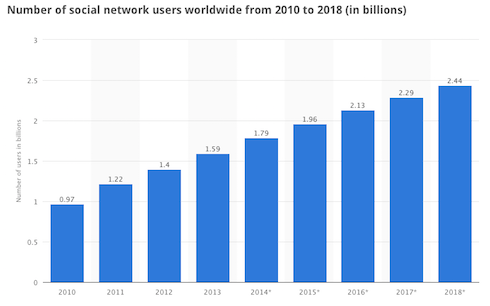By adaptive - December 10th, 2014
With 2015 approaching, what trends, channels and opportunities should corporations have on their roadmaps?
As we approach a new year in marketing, it is clear that corporations have continued to evolve their use of social media as a core component of their marketing toolset. And the market as a whole across the social media space is rising. According to figures from Statistica, by 2018 there will be 2.44 billion users of social media networks, up from 1.79 billion today.
- 72% of executives say that social media has impacted on their internal organisation - that’s a deep level of impact, and would be impossible were social simply an ‘addition’ to the normal way of doing business.
- Social has already begun to deeply impact on customer service, customer insights, employee engagement - and even product development.
- Importantly, our respondents say that this trend will continue over the next 12 months - witness the increasing number of respondents saying that social will impact on multiple customer departments over the next year.
- A huge 83% of respondents recognise we’re not fully leveraging social’s potential yet.
- Next year will see a ratification of the work that corporations have done throughout 2014, as they continue to experiment with social media networks and what this means for their brands.

